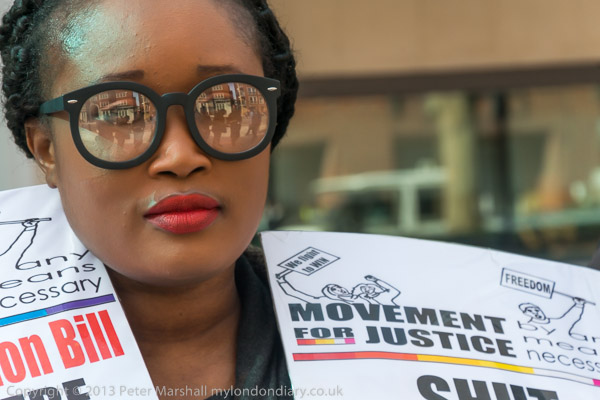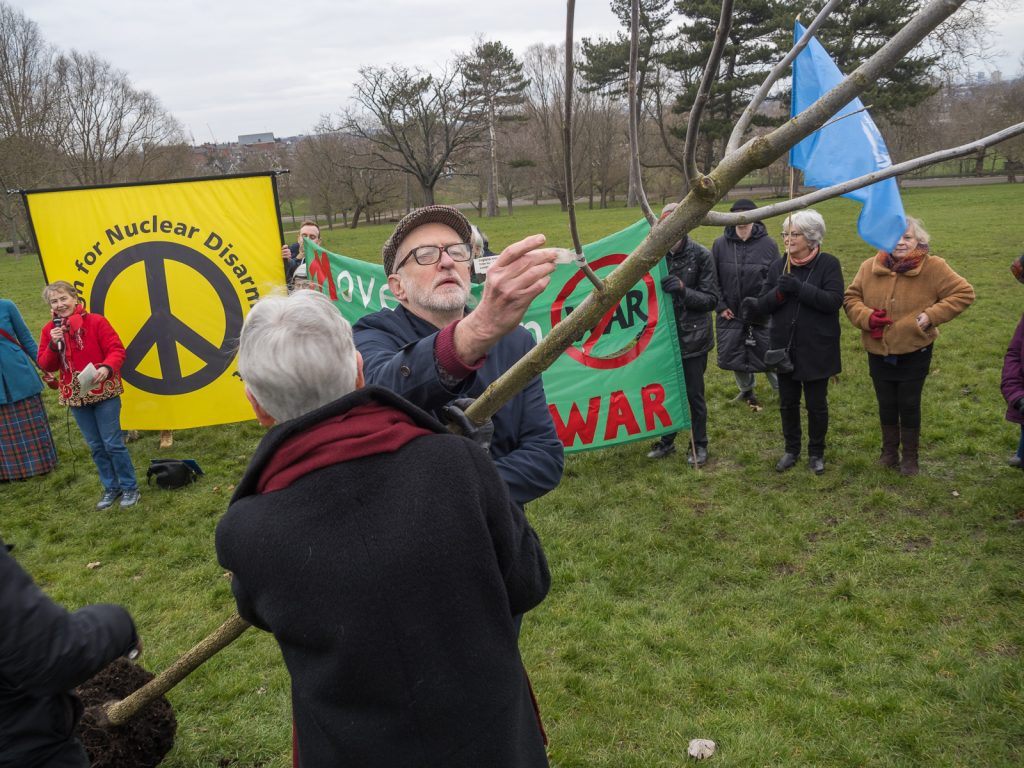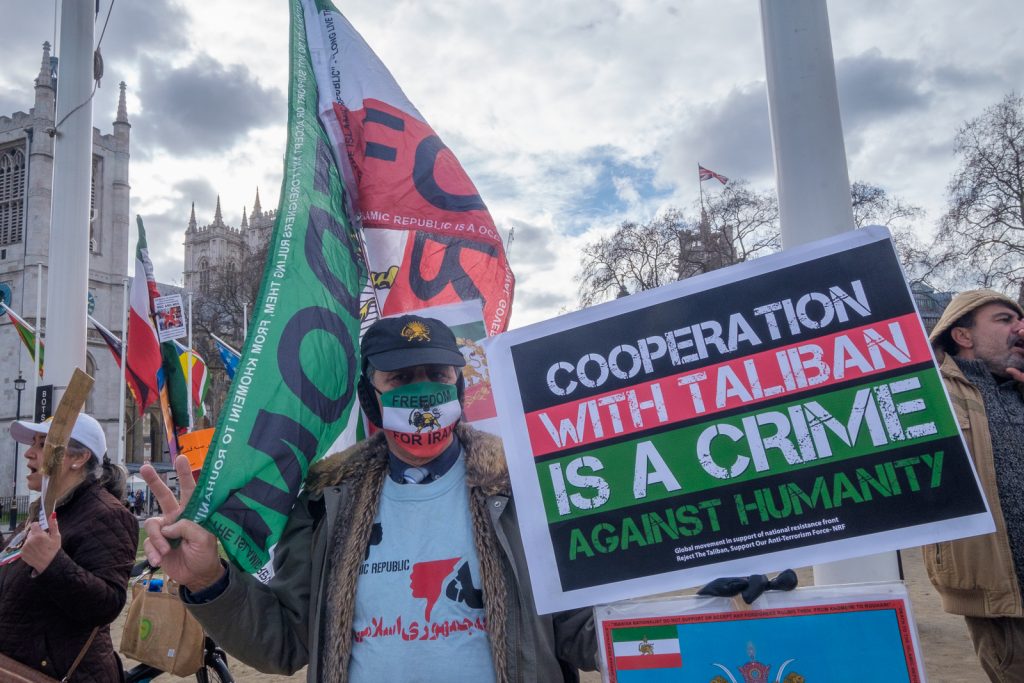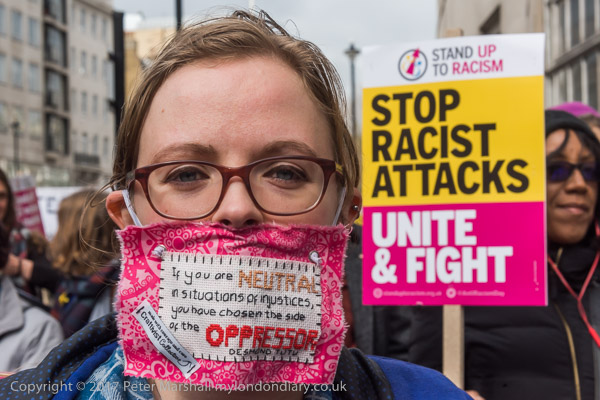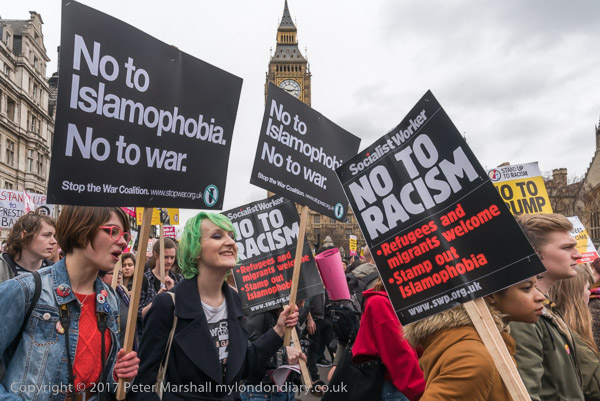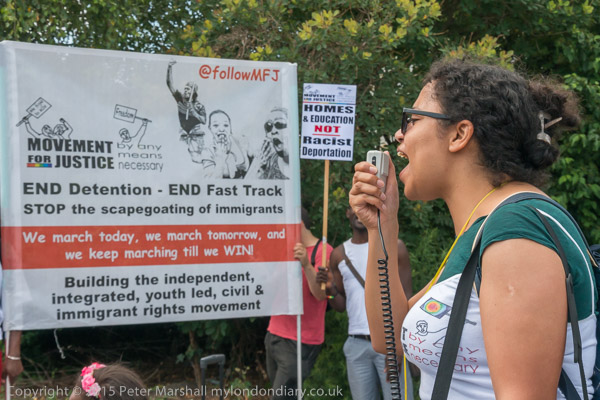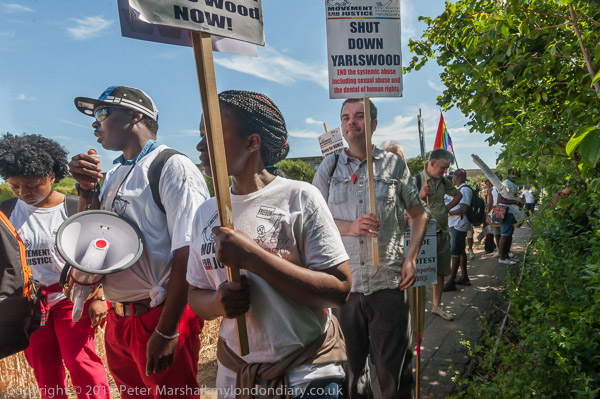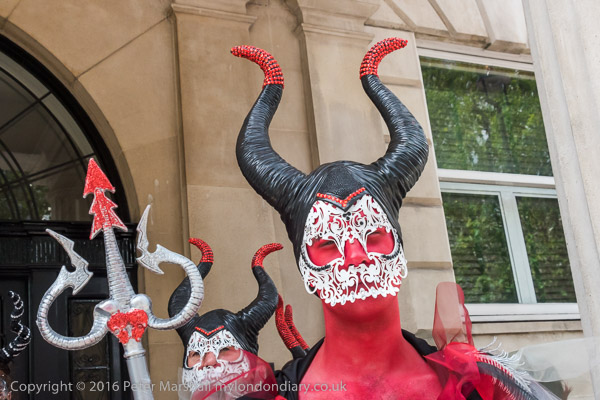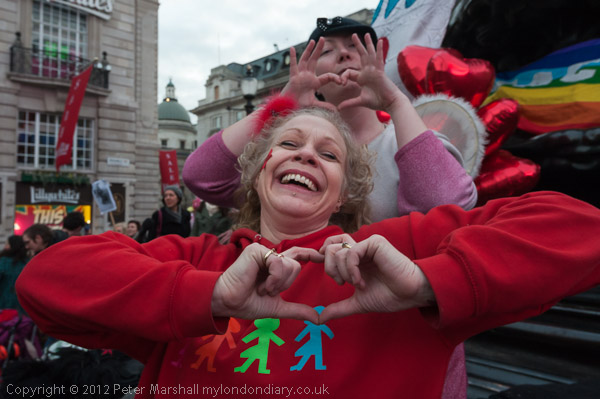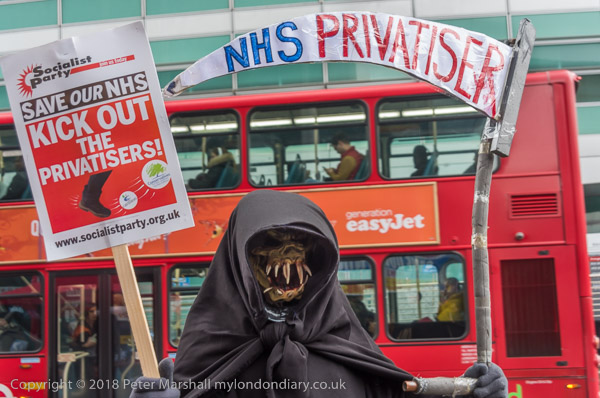Corbyn Victory & Refugees Welcome: Saturday 12th September 2015 was a day of hope when Jeremy Corbyn won the Labour leadership election with a landslide victory, getting more than three times the vote of his nearest rival, Andy Burnham. Several hundred Corbyn supporters met at Speakers’ Corner before the Refugees Welcome march to listen to the results of the Labour Leadership election.
Victory Party for Jeremy Corbyn – Speakers’ Corner, Hyde Park,
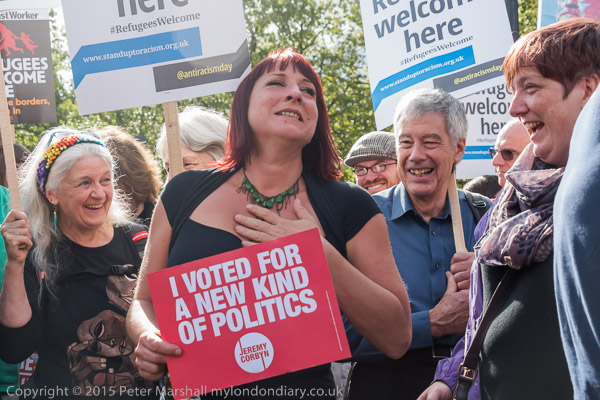
Tension built as the Deputy Leader results came and then erupted with Jeremy Corbyn’s first round victory.

Corbyn had only been able to stand in the election because some Labour MPs who did not support him were prepared to nominate him so that the Labour left would have a candidate in the ballot and not feel it was rigged against them. They thought he would only get a miserably low percentage of the votes.
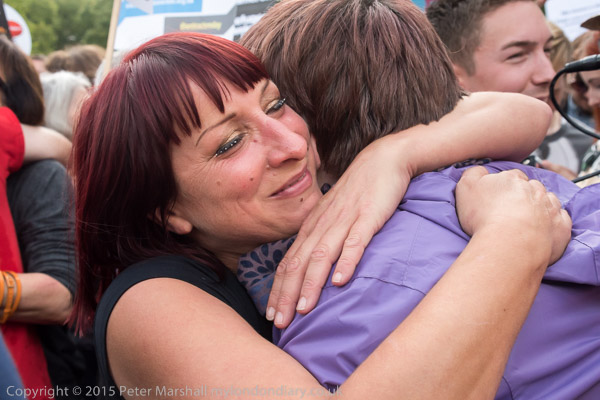
According to Wikipedia, the release of opinion polls before the election which showed Corbyn in the lead prompted “high-profile interventions by a number of prominent Labour figures including Gordon Brown, Tony Blair, Jack Straw, David Miliband, and Alastair Campbell, among others” who felt Labour with Corbyn as leader would be unelectable.

These interventions almost certainly increased support for Corbyn, and although these and other Labour figures such as Peter Mandelson, along with most of the media and press did their best to try to get rid of Corbyn, including various plots and mass resignations from the Shadow Cabinet, he remained popular in the country.
The 2017 election turned out to be a much closer contest than most had imagined, and it was only due to deliberate sabotage by Labour party officials that Corbyn lost. A leaked report in 2020 which demonstrated this led to the setting up of the Forde report into Labour party factionalism which although it called the earlier report “factional” confirmed many of its suspicions and conclusions – as well as criticising both sides in the party – remained secret until July 2022.

What shocked many of us was the evident relief shown by some leading members of the party as the 2017 election results were coming out that their party had lost. And the witch-hunt against the left in the party continues unabated.
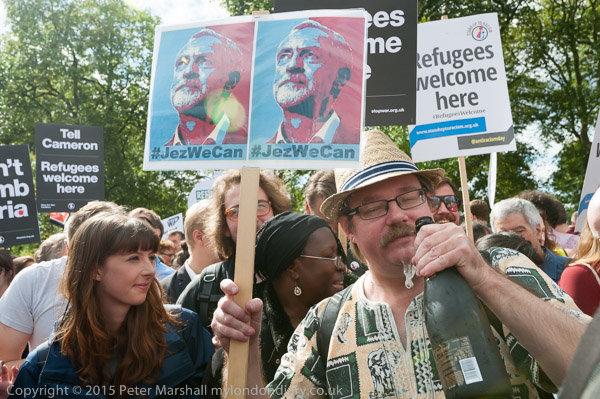
On the 12th September 12th 2015 there was much more media interest in the few hundred celebrating Corbyn’s victory than in the huge Refugees Welcome march which followed, and in the media scrum I got knocked flying and my equipment scattered, but managed to gather it up and continue work.
Victory Party for Jeremy Corbyn
Refugees Welcome Here Rally & March

From Speakers Corner I joined the huge crowd – at least 50,000 – filling Park Lane as far as I could see. This national march was a response to the many reports of refugees fleeing war and persecution, with people wanting to show their support for refugees facing death and hardship and their disgust at the lack of compassion and inadequate response of the British government.

On My London Diary is a list and photographs of some of the speakers before the march set off. I photographed the front of the march as it set up at the southern end of Park Lane and went with it for the first couple of hundred yards into Piccadilly, where I stopped to photograph the rest of the march as it came past.

The marchers were fairly densely packed and spread across the whole of the roadway (and sometimes on to the pavement too) and it took exactly an hour to go past me.

There were many at the protest who were not the usual protesters, people who said this was the first protest they had ever attended, as well as those that I knew from previous protests, and there were many interesting placards and banners to photograph – and many more pictures on My London Diary.

As the end of the march passed me I rushed into Green Park Station and took the tube to Westminster, arriving on Whitehall as it went very noisily past Downing Street.

I ran back to Parliament Square, and this soon filled up with people and banners. I sat down on the wall close to the Churchill statue, realising I was rather tired and hungry.

Many marchers left rather than stay and listen to the speeches, though the square was still crowded and I decided I would leave too.
More on My London Diary:
Rally Says Refugees Welcome Here
Refugees are welcome here march
Refugees Welcome march reaches Parliament
Flickr – Facebook – My London Diary – Hull Photos – Lea Valley – Paris
London’s Industrial Heritage – London Photos
All photographs on this page are copyright © Peter Marshall.
Contact me to buy prints or licence to reproduce.




